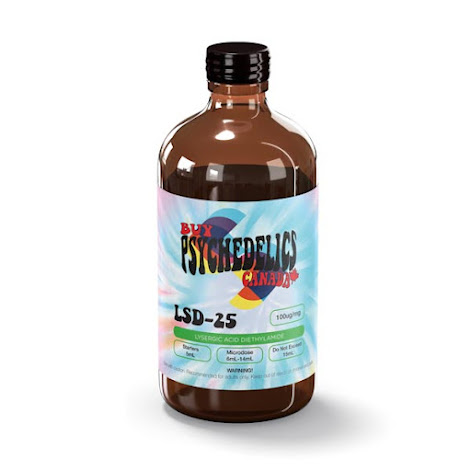one knows when we started taking psychedelics. Archeology shows that lsd on candy the artistic and technological complexity of the mortal being endured a great advance roughly.
According to Terence McKenna, this" cognitive revolution" may have come about as a result of early man's discovery of psilocybin. Was it microdosed? We can only presume about it.
In the 19th century, Western wisdom began to look at psychedelics. The" first surge of psychedelic exploration", from 1880 to 1950, concentrated on mescaline. The true birth of microdosing didn't do until the alternate surge of psychedelic exploration, which reached its peak in the 1960s. This surge concentrated on psilocybin and LSD.
Hofman was the first person to propose microdosing. He suggested that microdosing on LSD might have a salutary physical and internal effect. He stated that it was an under- delved field. Hofman himself microdosed into old age, taking long walks through the forestland under the influence of small boluses of acid. He must have been doing commodity right, because he lived to be 102 times old.
After Hofman's discovery, psychedelics formerly again took center stage. During the 1960s, they appeared on both sides of a culture war, with the CIA conducting trials like the controversial MK Ultra design, and America's youth conducting their own particular exploration into these medicines and their goods.
The 1960s also saw less minatory scientific exploration on psychedelics James Fadiman led the charge with the publication of a 1966 study on the goods of psychedelics and creativity( bandied in further detail below).
As the hippie culture of the 1960s came a thing of the history, the fashionability of psychedelics declined.
And exploration into their goods also declined. But with the appearance of the 21st century and the rise of the millennial generation, psychedelics are passing a belle epoque . We've entered the third surge of psychedelic exploration.
Moment, psychedelics have come out of the murk in a new way rather of being used to" turn on, tune in, drop out," numerous millennials and Gen Xers use these medicines to enhance their careers. Programmers, entrepreneurs, and directors have begun microdosing on psychedelics to fuel their creativity, boost their energy, and boost their competitiveness.
Interest in microdosing has expanded in recent times. Several books and examinations, as we will see in the coming section, have aroused the public's curiosity.
Hofman was right microdosing is an under- delved field. That said, there have been some veritably intriguing developments lately.
Before going into them, it would be accessible to review the most important psychedelic examinations of the history.
James Fadiman, a leading experimenter in the world of microdosing, was involved in a crucial trial with psychedelics in the 1960s that of psychedelic agents in creative problem working. Professionals working on delicate problems were given a small quantum( a" millidosis" nearly between a microdose and a normal cure) of LSD or mescaline, and asked to concentrate on one problem. By the end of the study, the actors had created a new design for a ray- steered direct electron accelerator, a new interpretation of the glamorous tape recording archivist, several new pieces of cabinetwork, and numerous other innovative products.
Study actors reported lower inhibition, a better amenability to reframe problems in a larger environment, and a lesser capability to associate generalities across disciplines. They also reported lesser conceptualization inflexibility, increased visual creativity capability, easier availability to subconscious information, lesser empathy, superior runner- turning capability, and a better readiness to fantasize results.
trials like this show that psychedelics can ameliorate professional performance. These kinds of studies confirm that psychedelic improvements aren't false doctrine, but useful and occasionally genius discoveries. Psychedelics really ameliorate the practical capacities of the mortal being.
In recent times, Fadiman's interest has concentrated on microdosing. Since 2010, she has collected hundreds of reports from people around the world microdosing. The response has been fully positive.
A 2018 study conducted in the Netherlands tried to measure the effect of microdosing psilocybin on intelligence. It was set up that, although fluid intelligence wasn't affected, coincident and divergent problem working chops bettered.
In another preregistered 2018 study conducted at the University of Toronto, people who microdosed scored advanced on measures of creativity, reasonableness, and open- mindedness, and lower scores on measures of negative affect and dysfunctional stations. Given the study design, it's insolvable to know which way the reason ran- whether microdosing made people more sensible, or whether sensible people were more willing to microdose. Another former study from the same time attained analogous results.
utmost psychedelics aren't murderous to humans, and have veritably many side goods, indeed at high boluses.
normal boluses of these substances can beget cerebral torture, bafflement, anxiety, and other symptoms.
This threat is reduced with microdoses. Of all the reports collected by Fadiman, only five speak of adverse internal goods. All by each, microdosing is much safer and healthier than going to a bar for a drink.
Psychedelic medicines are illegal in utmost European countries. An exception is Portugal, where all
medicines have been interdicted. There you can microdose all you want, and the only peril you could run is that of committing a foul. As of 2018, microdosing in general remains a counterculturist exertion.
In some cases, the legitimacy of microdosing depends on the medicine chosen. In numerous European countries, the possession of small quantities of marijuana is interdicted, that is, it has gone from being a crime to a misdemeanor. These countries are the Netherlands, Belgium, Spain, Italy, Switzerland, Croatia and the Czech Republic.





Comments
Post a Comment